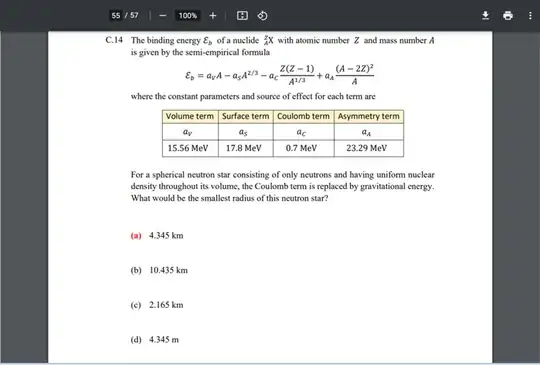 If one considers the Semi Empirical Formula (SEMF) in nuclear physics containing the Volume, Surface, Coulomb energy and Asymmetry Energy terms for the binding energy of a nuclide, then by replacing the Coulomb energy term by gravitational potential energy term, one obtains a minimum radius of 4.8 or around 5 km for a neutron star.
If one considers the Semi Empirical Formula (SEMF) in nuclear physics containing the Volume, Surface, Coulomb energy and Asymmetry Energy terms for the binding energy of a nuclide, then by replacing the Coulomb energy term by gravitational potential energy term, one obtains a minimum radius of 4.8 or around 5 km for a neutron star.
However, I believe the above is an ideal case-as, the complete and realistic formulation for computing the minimum radius of a neutron star is obtained by using the concepts of hydrostatic equilibrium (i.e., degenerate Fermi gas/ neutron degeneracy pressure models, as can be found in these StackExchange discussion threads: Size and density of neutron stars Now while the aforementioned sites (among others) discuss realistic minimum possible radius for the neutron star by invoking hydrostatic equilibrium-based and General Relativity-based concepts, my interest lies in an ideal case. Is the concept of using SEMF to determine minimum stable radius of the neutron star correct, ideally?